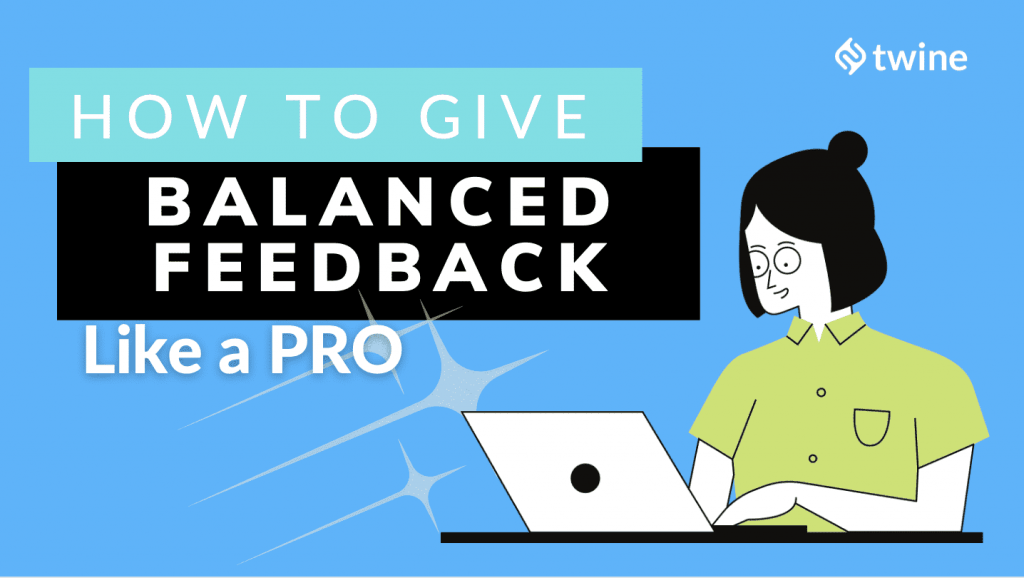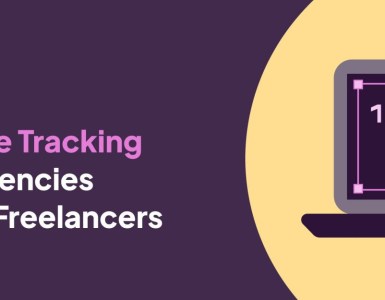
Giving balanced feedback is a fine art, that many haven’t mastered.
You want to find the right way of being constructive, without being completely discouraging – right? You want to build them up, without leaving their head in the clouds – we get it, we get it, we’ve heard it all before.
When working with freelancers, it can be particularly difficult.
Here, you’re dealing with experts in their field, who you’ve gone to for a particular job to be done. Although it may feel uncomfortable at times (especially when it’s negative), giving feedback is an integral part of your workflow.
Having feedback enables you to iron out problems, improve and move forward with the project. It’s also great for solidifying your relationship with your freelancer, as when it’s positive, it’s a chance for you to give them a well-earned pat on the back.
But, it can be a difficult thing to get right.
There’s a fine line to tread – and luckily for you, we’ve already treaded it! Whether you’re giving feedback to full-time or part-time employees, here’s our complete guide on delivering balanced feedback, that’s sure to get your project in the right direction.
They want feedback

Feedback helps anyone and everyone do their job better!
For freelancers, working with a new client can be a bit like taking a leap into the unknown. Sometimes all they have to go on is the brief or specification that you’ve provided them with – that’s it! It’s hard for them to do the best job they can, if they aren’t sure that what they’re doing is even right. So, make sure you are giving them what they want, and give feedback wherever and whenever you can.
Overcommunicate. Don’t wait till the end of a project to discover you weren’t on the right path. Always keep asking questions and keep making sure that everyone is on the same page. Clearly state deadlines and review and communicate. You always want to be anticipating problems instead of reacting to problems for a successful project together. – Gail Johnson
Build a strong relationship

What makes good business? Well, put simply, a good, steady foundation is what makes good business – with passionate people eager to work on the project. So, a great way to have a strong relationship is to first choose the right freelancer. We have a whole article on what you should consider when choosing your freelancer, so make sure to read that first before making any hiring mistakes…
Secondly, treat them like one of the team. Your freelancer may be a part-time employee who happens to work unsociable hours and is never working when your other team members are – you, as a client, have to work around this. Let your freelancer know that they are valued, supported, and are vital to the success of the project. Not only that, but make sure they’re invited to any and all meetings – and don’t forget the socials!
Finally, establish clear expectations and provide them with the right resources they need to get the job done well.
The closer you are with your freelancer, the easier it becomes to say what you think, and give useful feedback. If you have a good rapport, they’ll naturally trust your opinion more so than if you’re barely civilized.
Wait… what is feedback?

Hey – it’s a question that needs to be answered! You’d be surprised how many clients think that feedback is only something you give at the end of a project. To clarify, this is wrong. Helpful feedback should happen throughout the duration of the project – what good is it telling your freelancer they’ve got it all wrong, only when they’ve finished!?
Giving feedback – whether it’s positive feedback or negative feedback – is a chance for you to feedback any comments and criticism (only the constructive kind, of course) you have about the way the project is shaping up. This process will help your freelancer improve and means you end up getting the work you want.
As a general consensus, longer-term projects, that take a few months or longer, may need more frequent feedback sessions than a project that takes a few days. The more at stake in terms of time and money, the more you’re going to want to share your feedback to ensure things are going as planned.
This leads us to our next point…
When to give feedback

Opportunities to provide feedback should come naturally.
No matter how big or small your project is, your freelancer should be giving you regular updates on their progress – and if they don’t, be proactive and ask them.
This is especially important if your freelancer is remote. If there’s been radio silence from them for a while, check-in and make sure they’re okay with everything – you’ll have less contact with a remote worker than with someone who works from your office.
You can schedule these feedback or performance review sessions ahead of time, or reach out to your freelancer and see what works with them. Either way, if they know you’re a client who’s keen to get stuck in, they’re going to respect that a whole lot more than someone who just leaves them to it.
Do it now, not later

As a client, you seriously don’t have time to procrastinate.
Be immediate. If you save up all your comments for the end of the project, or even halfway through the project, it’s too late.
Give balanced feedback the minute you notice something’s wrong. If your freelancer needs to change direction at this late stage, it’s going to end up costing you – what if they need to start again? What’s more, it’ll sour your relationship. They’ll secretly be thinking to themselves “Why didn’t they tell me this earlier?”.
Clear and direct feedback is essential to the freelancer/manager relationship and should be delivered at every possible opportunity. Remember that positive feedback is just as important as negative feedback—a freelancer may interpret your silence as a sign that something is wrong and inadvertently “fix” something that’s not broken.
If you have concerns about a freelancer’s performance, be as specific as possible about what he or she can do to improve. Time is literally money when you’re working with a contractor, and quick performance corrections require concise and honest communication. – Rally Team
Choose your weapon:

Email is most people’s weapon of choice, but is it really the best tool to deliver balanced feedback for your freelancer?
Depending on what you’ve got to say, you might need to think about how you’re going to send it. If your feedback is urgent, email is certainly not the best. It could be hours before that inbox gets checked! You’ll be much better off using either your phone or a video call software like Skype, Zoom or Google Meets.
Also, if your feedback is particularly sensitive, make sure it can’t be misinterpreted. The last thing you want is for your comments to be taken the wrong way, and for your freelancer to be left feeling dejected. Emails often lack the subtleties and implications of spoken word, which is why they can be misread so often. Speaking directly to the individual, and letting them see your expression, is much better for this kind of feedback.
Be specific:

You don’t need exceptional feedback skills to give balanced feedback – all you need to do is get your point across in the most polite manner possible. Imagine it’s you sitting on the other end of the table, screen, email thread, etc. Would you be happy with the feedback you’re about to give?
A balanced approach is favored, but another thing that makes the best kind of feedback is to be specific. This works both ways – negative and positive feedback. If they’re doing a good job, it’s more useful to know exactly what it is about their performance you appreciate. Whilst “Great work there!” is better than nothing, I’m sure you’ll agree that “Your last blog post got 50% more clicks than our previous one, good job!” is much more useful.
The same goes for negative criticism. It’s hard to deliver negative criticism, so it can be tempting to skirt the issue by saying something vague. But if you do this, the freelancer won’t know what the problem is or how to fix it. For instance, don’t say “Your last blog post didn’t really work for us…” and do say, “the topic you chose for your last blog post doesn’t fit with our brand.”
Don’t beat around the bush:

Your balanced feedback needs to get to the point fast, and NOT use mixed messages.
Following a positive statement immediately with a ‘but’ or ‘however‘, implies something negative is about to come, negating all of the positive criticism you just gave. “The newsletter you delivered last month was great but, the one you sent this month got a worse open rate…” – think about how that ‘but’ pivots the sentence. It’s as if the first positive statement never happened!
If you need to give both positive and negative feedback in the same session, make sure they’re separate points. The whole point of balanced feedback is the balance, after all.
Don’t get personal:

Delivering negative feedback is a necessary evil and if you get it right, it will result in a more productive freelancer.
Before you go in there, all guns blazing, remember that negative feedback has a longer-lasting impact on the person receiving it. When criticizing someone’s work, it can be very easy for them to get defensive and take it personally if you don’t deliver it in the right way. But, if you use the right language and tone, you should be able to avoid getting that response from them.
Avoid using phrases like ‘I don’t like’, as this can very easily sound like a personal attack and removes professionalism from your argument. The more specific you can be the better!
For instance, ‘Your latest update – I just don’t like it’ is a pretty useless piece of criticism that the freelancer can’t do anything with, and will only work to anger them. Instead, try addressing a specific issue such as ‘I’d like to see the logo in green rather than blue’.
Feedback works both ways:
Remember that feedback sessions are an opportunity for your freelancer to feedback on you as well. If there’s something that’s not working for them, they should be given the opportunity to voice these concerns too.
Want to learn more about working with freelancers? Download our free Ebook.
Ready to hire? Our marketplace of over 410,000 freelancers have the skills and expertise needed to skyrocket your business to the next level. From marketers to designers, copywriters to SEO experts – browse the talented bunch here!



